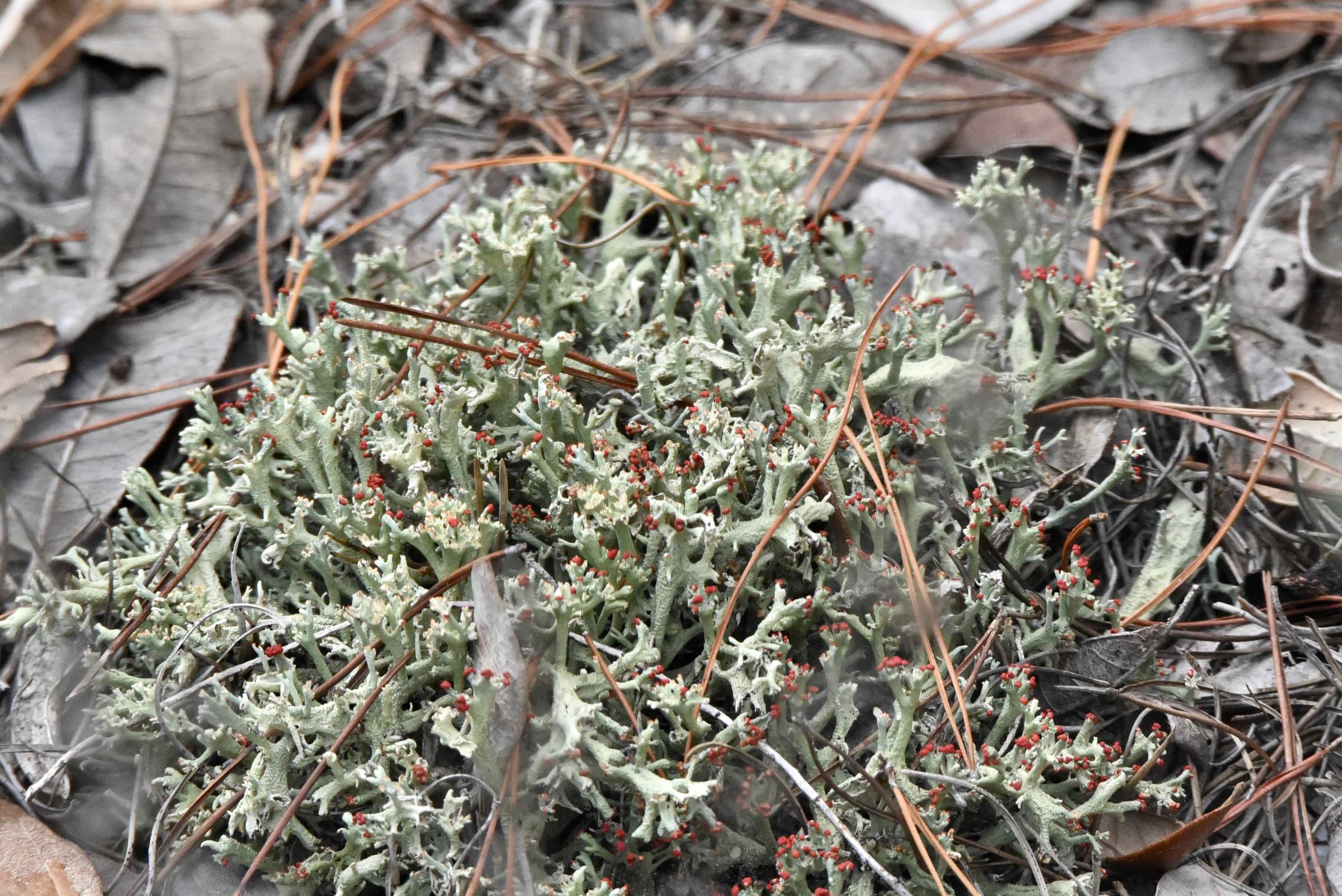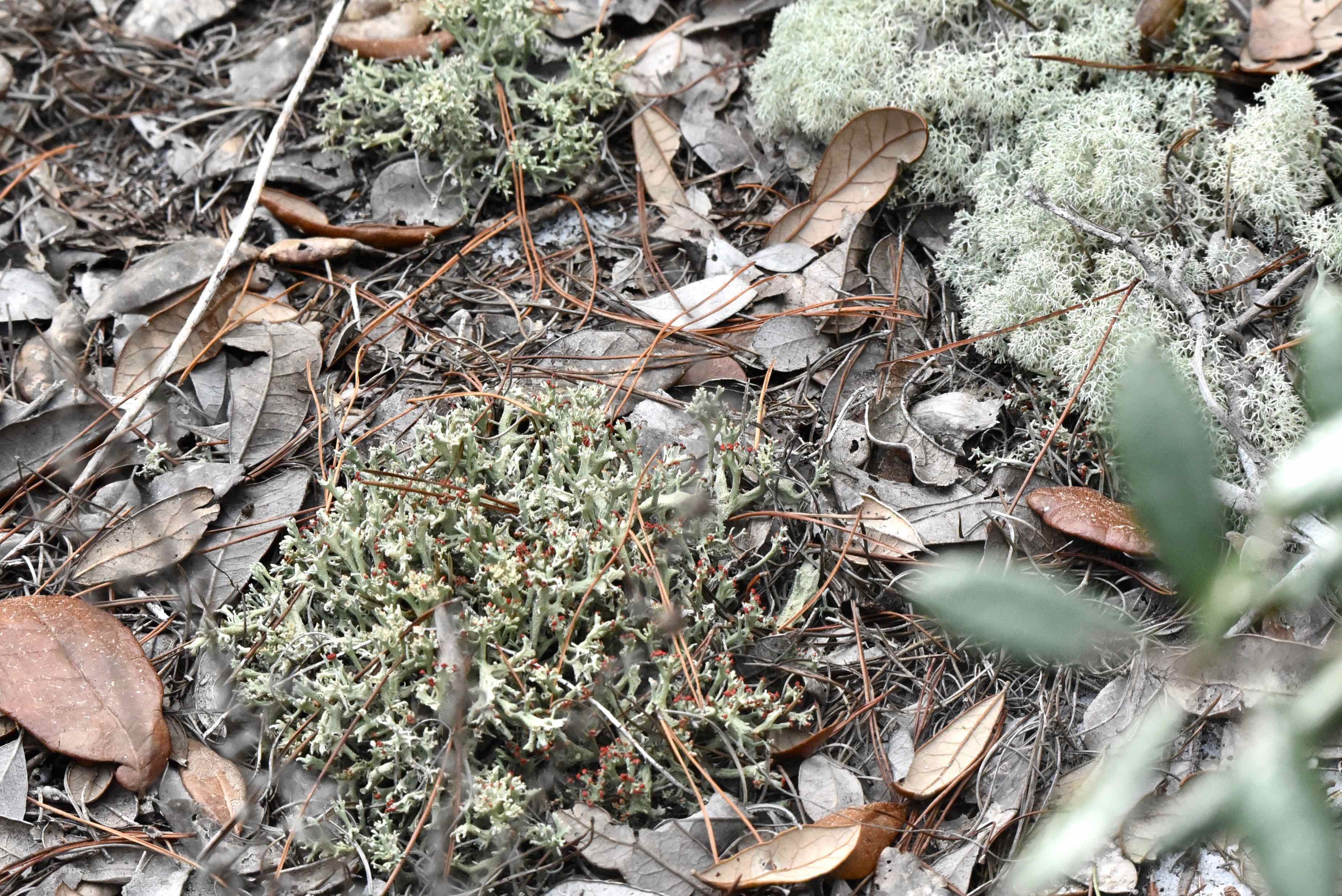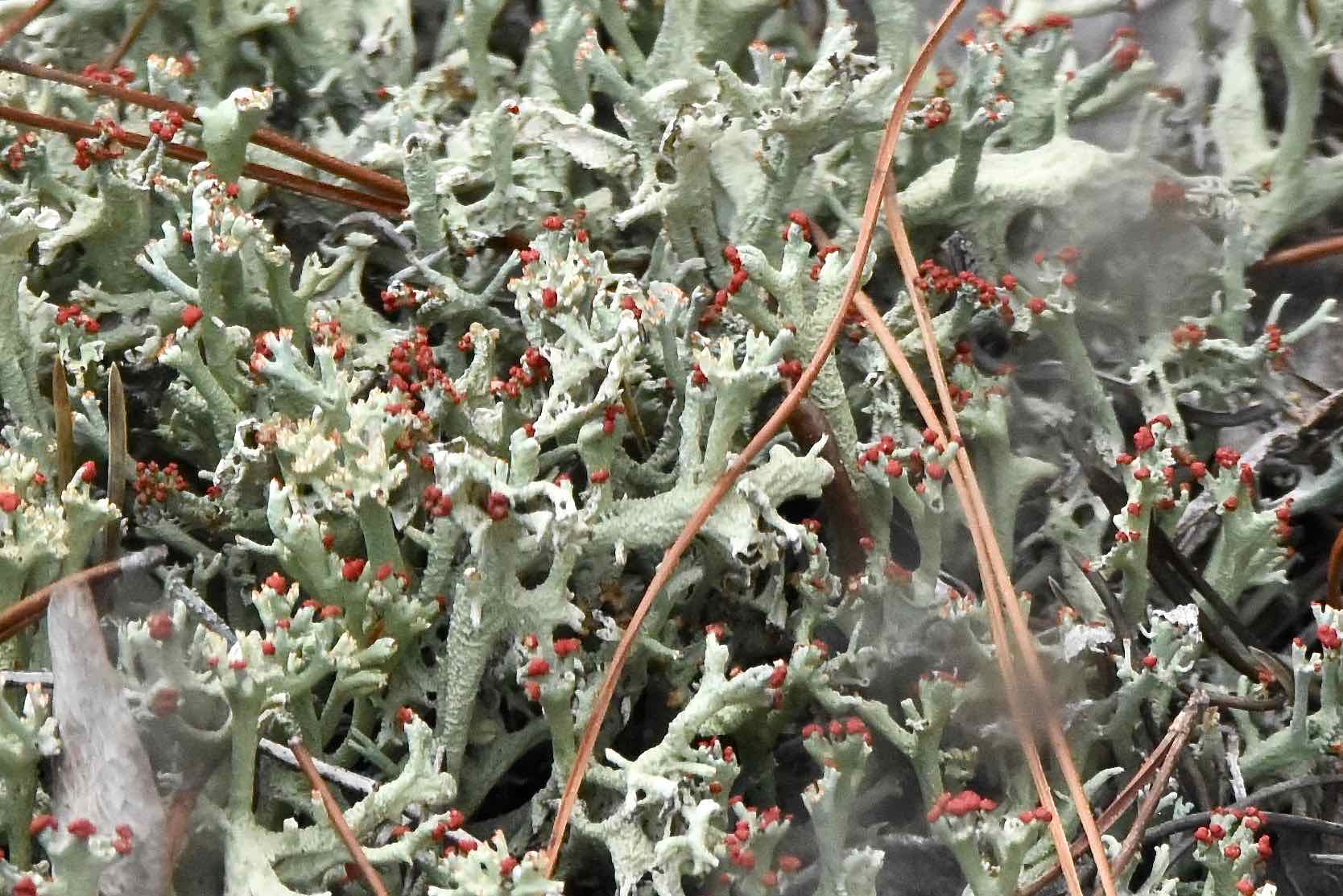
British soldier lichen, photographed at Jupiter Ridge Natural Area, Jupiter, Palm Beach County, in January 2019.
“The redcoats are coming! The redcoats are coming!” Paul Revere (and others) allegedly cried on his (their) famous ride through the Massachusetts countryside the night before shots were fired at Lexington and Concord, igniting the American Revolution.
The redcoats, of course, were the British Army. And the image of red-clad soldiers became so ingrained in American history, culture and mythology that someone, some time, upon seeing a sea foam green lichen with a bright scarlet cap growing in the woods named it British soldier, Cladonia cristatella.
It’s been called other things, cup lichen and scarlet-crested cladonia, but British soldier is the name that has stuck.
British soldier is commonly found throughout the eastern and central United States, Florida included, and a good chunk of Canada as far west at Manitoba and Saskatchewan and far north as the Northwest Territories. Its scientific name translated from Latin means “crested mountain.”
A quick refresher course on lichens: They are not plants, rather they’re nature’s Franken-creatures, an algae (or cyanobacteria) and a fungus that combine together to form something different than either of them singly. A partnership, if you will. The component fungus and algae can live separately, without each other, but not as well as they do together.
The algae provides sugars through photosynthesis, while the fungus, really the dominant partner in the relationship, provides structure and some minerals. The fungi penetrates some of the algae cells through appendages called haustoria, enabling nutrients to flow back and forth. Although entities unto the themselves, lichens are classified taxonomically by the fungus partner. The algae in the case of British soldier goes by the scientific name, Trebouria erici.
Lichens are a pretty good indicator of air quality, so much that the U.S. Forest Service devised an air quality measuring system using lichens. If they’re thriving in an area, the air quality, most likely, is good.
Lichens grow only a millimeter or two per year, and British soldier is no different. The patches of British soldier shown in the photos on this page aren’t all that big, but they’re still likely decades old.
A British soldier lichen doesn’t get its scarlet “cap” until it’s at least four years old. That cap, called an apothecium, contains spore-producing reproductive parts. But the spores are fungus only, not the algae, so they must land near free (unattached) T erici cells in order to produce new lichen. British soldier also reproduces when pieces of the lichen break off. It’s akin to vegetative reproduction in plants.
British soldier grows on rotting wood, stumps, on soil and even on rocks and concrete. They are food for a variety of animals, including white-tailed deer. Most of the thousands of lichen species on the planet are edible for us humans, and British soldier is one of them, though you’d have to be in survival mode in order to do so. They’re highly acidic.
British soldier is a member of Cladoniaceae, the family of cladonia lichens.
Jupiter Ridge Natural Area



